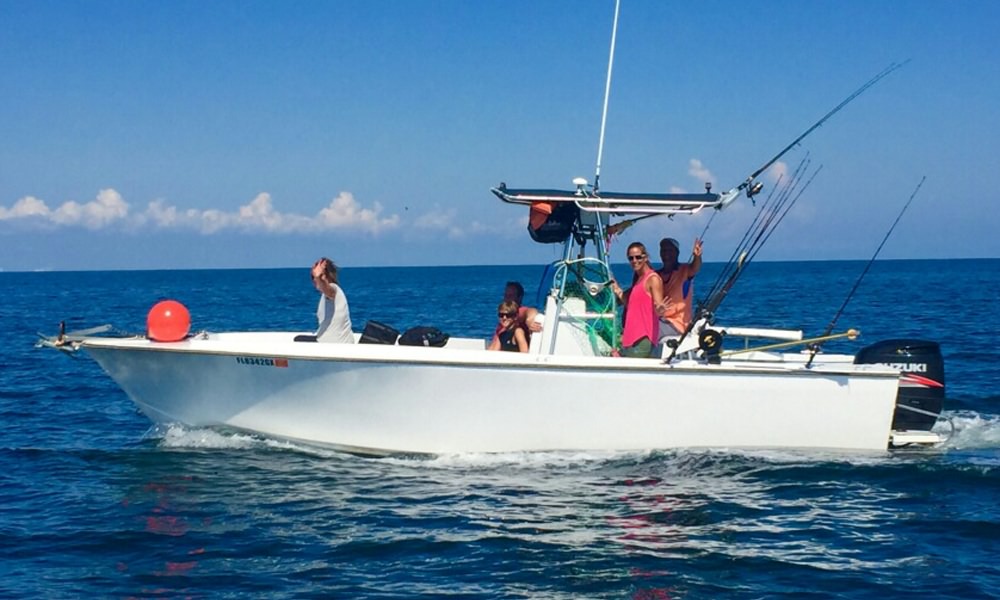How to Go Deep Sea Fishing:The Complete Guide
Does your idea of the ultimate recreational fishing experience come straight from the pages of Hemingway’s Old Man and the Sea, with plenty of big fish, screaming reels, and endless blue waters? If so, you’re thinking of deep sea fishing, one of the angling world’s most popular and beloved ways of targeting a variety of species.

Deep sea fishing is all about being out on open waters, usually so far away from shore that you can no longer see it. The fishing action generally takes place in waters at least 100 feet deep, with targets being big fish that live offshore. We’re talking Marlin, Sailfish, Tuna… Although these species make for a seriously exciting catch, you have to put the work in to hook them.
And as is the case with all types of fishing, there’s no guarantee you’ll even encounter your target species on your trip. In the words of many captains: it’s called fishing, not catching! Luckily, a deep sea fishing experience can be full of excitement, learning opportunities, and unforgettable moments regardless of what you do or don’t catch. Even better, there’s a wealth of charters across the world that will help newbies find their feet.

Below, we’ve delved into the definition of deep sea fishing, as well as covering common targets, the type of locations you can expect to explore, and how to prepare for your trip. Hopefully, you’ll come out of it feeling like you have Hemingway’s level of knowledge about the topic! Let’s dive in…
What is deep sea fishing?
Knowing what exactly counts as deep sea fishing can be pretty confusing, especially for novice saltwater anglers. For many sport fishers, it tends to be synonymous with sportfishing or big game fishing.

The term is also sometimes used interchangeably with the term “offshore fishing.” So are they the same thing? In a word: Not really. While it’s common to head offshore when deep sea fishing, the main difference between the two is the depths of the water you’ll be fishing in.
Offshore describes your distance from land, while deep sea refers to your distance from the seafloor. Offshore waters are at least 9 miles from shore, reaching depths from 50 feet to a couple of hundred feet. Deep sea fishing also takes place in open blue waters with no visible shoreline, usually at least 100 feet deep. These fishing grounds often hold structure such as reefs, wrecks, and oil rigs, which big fish like to swarm around.
So why does the distinction between offshore and deep sea fishing matter? Well, it can have an impact on the amount of time you’ll travel for, as well as the fish you’ll be targeting. But more on that later!
Where will I be deep sea fishing?
As we covered above, deep sea fishing is all about the depths of the water you’ll be fishing in. Sounds simple, right? Well, we’re going to throw a spanner into the works! Depending on where you’re fishing, the distance it takes to reach waters measuring 100+ feet deep can really differ.

Along parts of Florida’s Gulf Coast, such as Destin, the sea floor slopes sharply and you can reach seriously deep waters within a few miles of shore. Head somewhere along Mexico’s western shoreline such as Cabo, and you can encounter deep sea species less than a mile out where the continental shelf drops off suddenly. You can generally start deep sea fishing with minutes of departing the dock in these places.
In some parts of California, however, deep sea fishing can involve journeying out to “the canyons.” These lie a whopping 100 miles from shore. Trips like this aren’t for the faint-hearted. They involve long journeys on choppy waters, and require you to spend at least a full day at sea.
As well as the distance you’ll have to travel, the topography of the water you’ll be fishing in can vary. In some locations, waters over 100 feet in depth house famous big game monsters that are synonymous with deep sea fishing. In other places, they’re packed full of reefs and oil rigs, and you’re more likely to encounter larger bottom fish.
A Quick Note on State vs. Federal Waters…

When deciding on your deep sea fishing charter in the US, think about whether you want to fish in state or federal waters. This will impact the type of fish you’ll be able to target, the licensing you’ll need, and the regulations around keeping your fish.
Here’s a quick overview:
- State waters. In the Gulf of Mexico, state waters extend 0–9 nautical miles from shore if you’re fishing in Texas, Puerto Rico, and along Florida’s Gulf Coast. Elsewhere, it’s 0–3 nautical miles. If you’re fishing in the Atlantic, state waters extend 0–9 nautical miles from shore across the board.
- Federal waters. Federal waters start where state waters end, and usually extend around 200 nautical miles from shore or wherever other countries’ waters begin.
— by fishingbooker.com —



